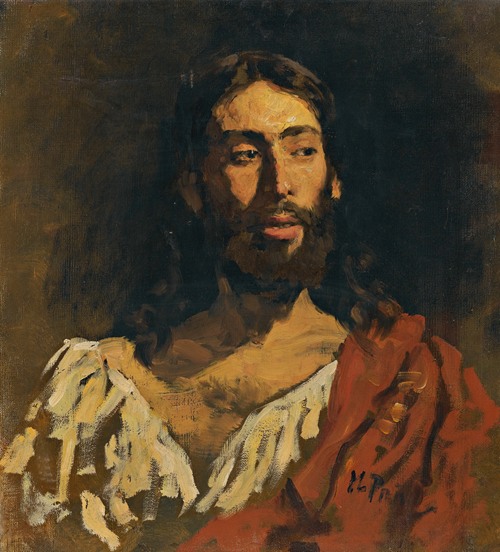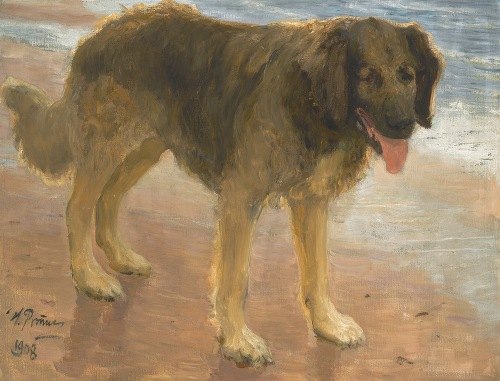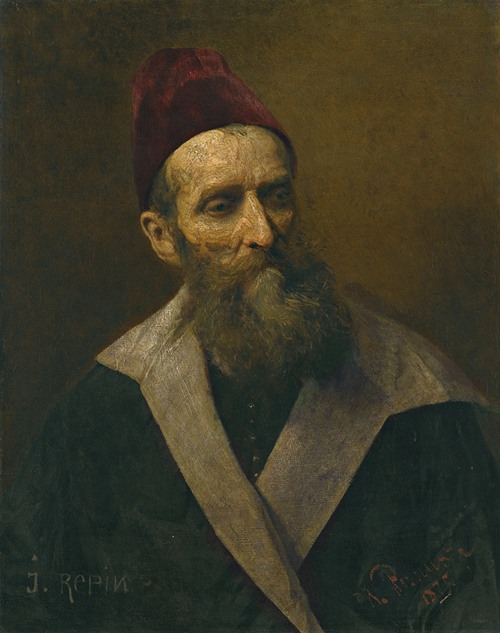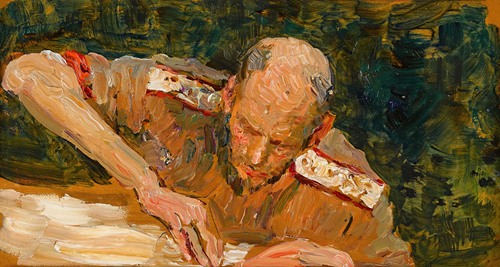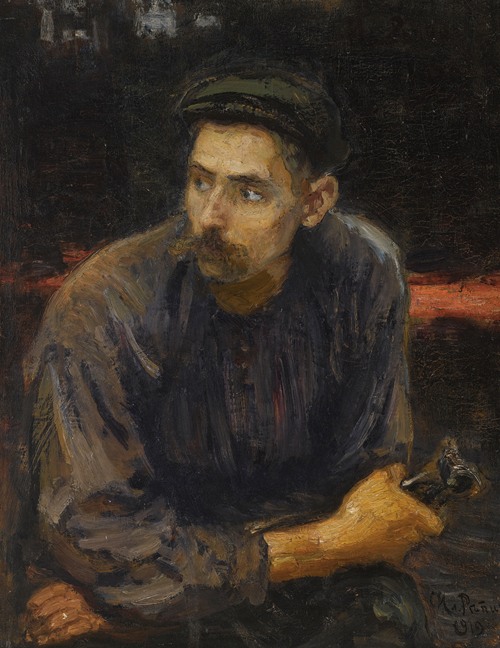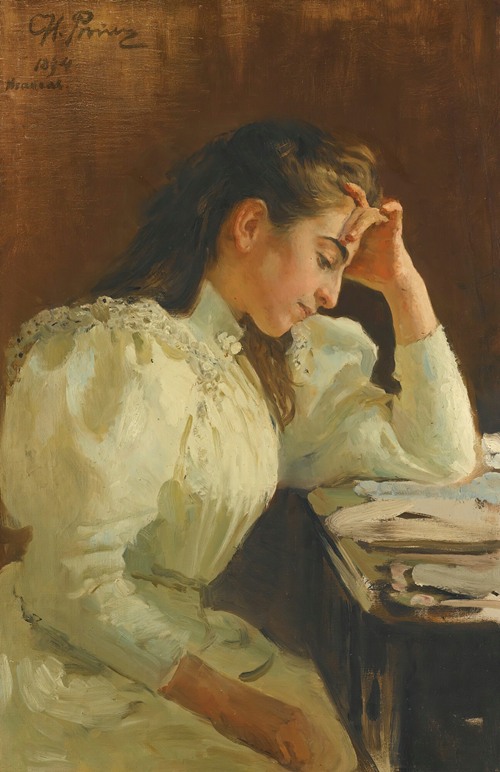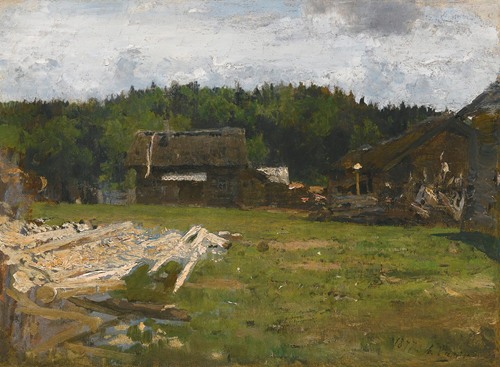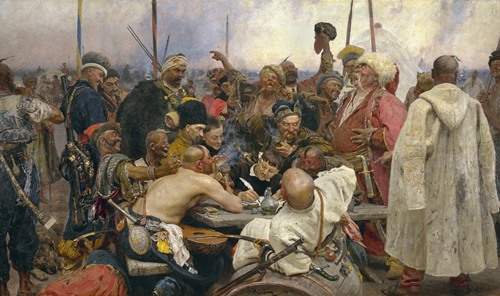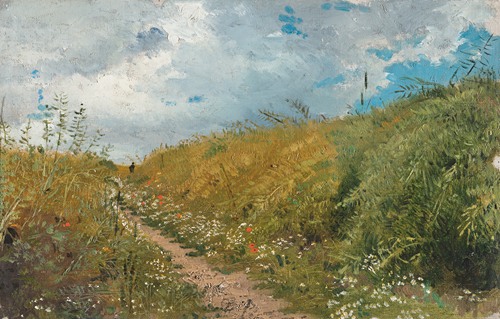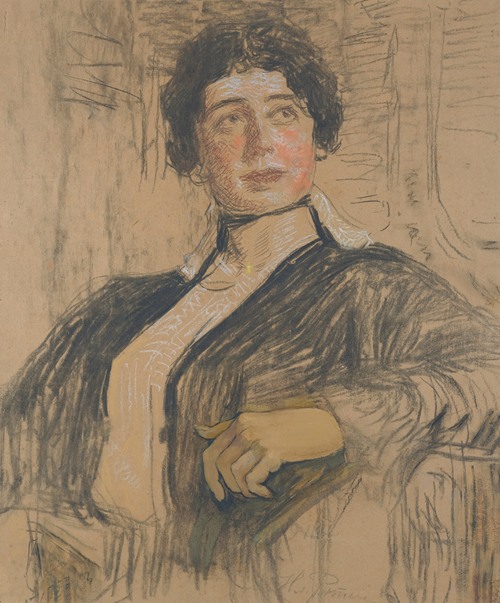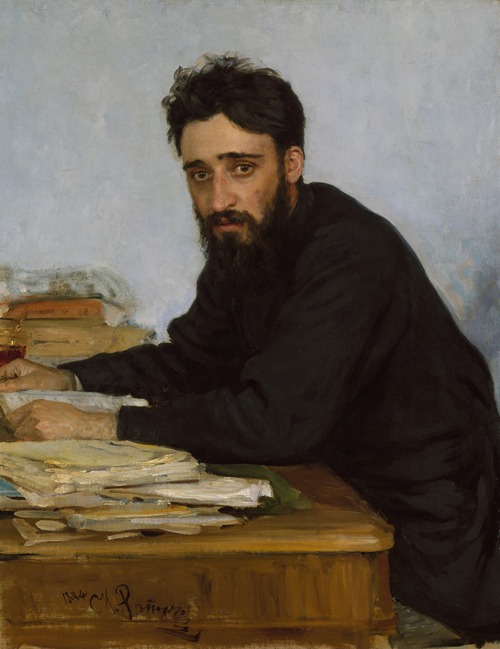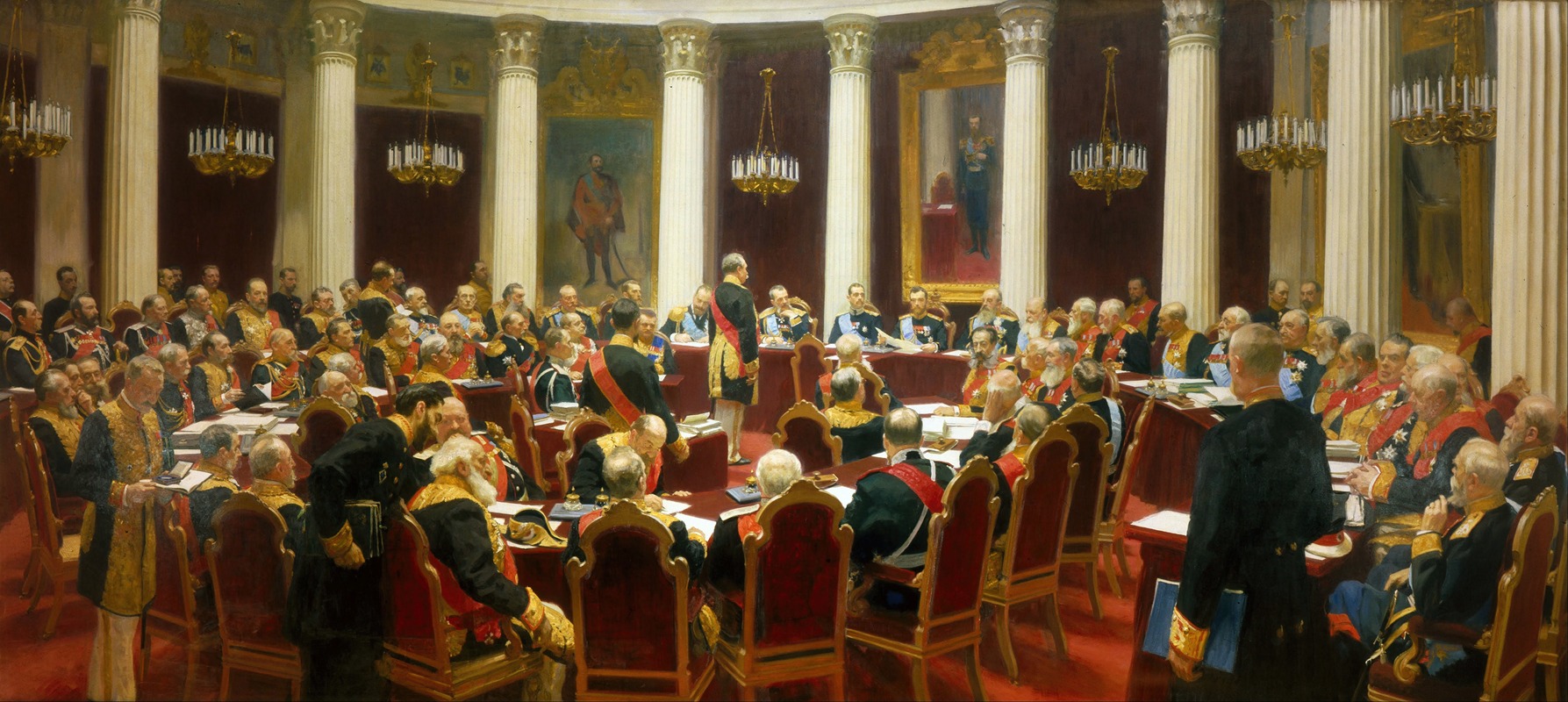

Ilya Yefimovich Repin was a Russian and Ukrainian realist painter. He was the most renowned Ukrainian artist of the 19th century, when his position in the world of art was comparable to that of Leo Tolstoy in literature. He played a major role in bringing Russian art into the mainstream of European culture. His major works include Barge Haulers on the Volga (1873), Religious Procession in Kursk Province (1883) and Reply of the Zaporozhian Cossacks (1880–1891).
Repin was born in the town of Chuguyev, in the Kharkov Governorate of the Russian Empire, in the heart of the historical region of the Sloboda Ukraine. His father Yefim Vasilyevich Repin (1804—1894) was a private in the Uhlan Regiment of the Imperial Russian Army who fought during the Russo-Persian War (1826–1828), the Russo-Turkish War (1828–29) and the Hungarian campaign (1849) while making money on horse trade, his mother Tatiana Stepanovna Repina (née Bocharova) (1811—1880), also a daughter of a former private of the local Cossack Regiment, had family ties to noblemen and officers; the Repins had six children and were quite wealthy. As a boy Ilya was educated at the local school where his mother taught. From 1854 he attended a military Cantonist school. He did not have fond recollections of his childhood, mainly due to the military settlements his family lived in.
In 1856 he became a student of Ivan Bunakov, a local icon painter. In 1859–1863 he painted icons and wall-paintings by commission for the Society for the Encouragement of Artists. In 1864 he began attending the Imperial Academy of Arts, and met the painter Ivan Kramskoi. In 1869 he was awarded a small gold medal for his painting Job and His Friends. He also met the critic Vladimir Stasov and painted a portrait of Vera Shevtsova, his future wife.
Repin traveled to the Volga River in 1870 to sketch landscapes and studies of barge haulers (Repin House and the Repin Museum on the Volga commemorate this sojourn). The following year he was awarded a large gold medal for his painting The Raising of Jairus' Daughter. He married Vera Shevtsova in 1872 and met Pavel Tretyakov, who purchased some of Repin's first works. Repin's first daughter, Vera, was born the same year. During this time, he worked on the painting Barge Haulers on the Volga, commissioned by Grand Duke Vladimir Alexandrovich. The painting was completed in 1873.
In 1874–1876 he contributed to the Salon in Paris and to the exhibitions of the Itinerants' Society in Saint Petersburg. While in France he became familiar with the impressionists and the debate over a new direction in art. Though he admired some impressionist techniques, especially their depictions of light and color, he felt their work lacked moral or social purpose, key factors in his own art.
Repin earned the title of academician in 1876 for his painting Sadko in the Underwater Kingdom. His son Yury was born the following year. He moved to Moscow that year, and produced a wide variety of works including portraits of Arkhip Kuindzhi and Ivan Shishkin. In 1878 he befriended Leo Tolstoy and the painter Vasily Surikov. His third daughter, Tatyana, was born in 1880. He frequented the art circle of Savva Mamontov, which gathered at Abramtsevo, his estate near Moscow. Here Repin met many of the leading painters of the day, including Vasily Polenov, Valentin Serov, and Mikhail Vrubel. In 1882 he and Vera divorced; they maintained a friendly relationship afterwards.
Most of Repin's finest portraits were produced in the 1880s. Through the presentation of real faces, these portraits express the rich, tragical, and hopeful spirit of the period. His portraits of Aleksey Pisemsky (1880), Modest Mussorgsky (1881), and others created throughout the decade have become familiar to whole generations of Russians. Each is completely lifelike, conveying the transient, changeable nature of the sitter's state of mind. They give an intense embodiment of both the physical and spiritual life of the people who sat for him.
In 1923 Repin held a one-man exhibition in Prague. Celebrations were given in 1924 in Kuokkala to mark Repin's 80th birthday, and an exhibition of his works was held in Moscow. In 1925 a jubilee exhibition of his works was held in the Russian Museum in Leningrad, and his painting Calvary was shown in Oslo. In 1926 he declined an offer to move to Leningrad but donated three sketches devoted to the Revolution of 1905 and the portrait of Alexander Kerensky to the Museum of the Revolution of 1905 in that city. In 1928–29 he continued working on the painting The Hopak Dance (The Zaporozhye Cossacks Dancing), begun in 1926. Repin died in 1930, and was buried at the Penates. His work was held up as an example to Soviet painters after his death. After the Finnish town of Kuokkala was annexed by the Soviet Union, in 1948 it was renamed Repino in his honor. The Penates also became a museum in 1940.
